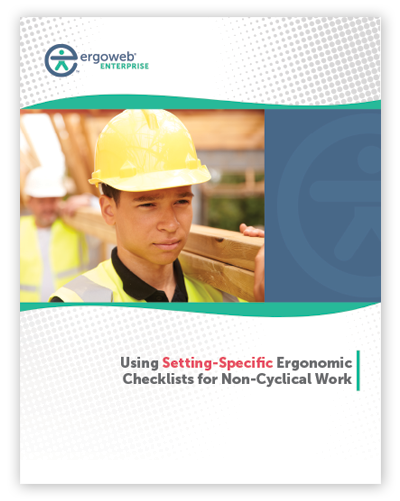October 9, 2012
In this reprint from The Ergonomics Report Archives, guest contributor Thomas J. Albin writes, "Checklists come in all forms and shapes: they may be self-developed, public or proprietary. We may call them surveys, risk identification forms, screening tools, assessment tools, or something else, but their purpose is to identify risk factors that put jobs 'at-risk'. Some checklists may have been validated for various contexts of use, others not at all ... we need to manage the use of checklists ... by collecting information on their reliability and validity just as one would gather information to manage any other manufacturing process. This can be done simply and dynamically by any practitioner in a way that is specific to the worksite for which they are responsible."






